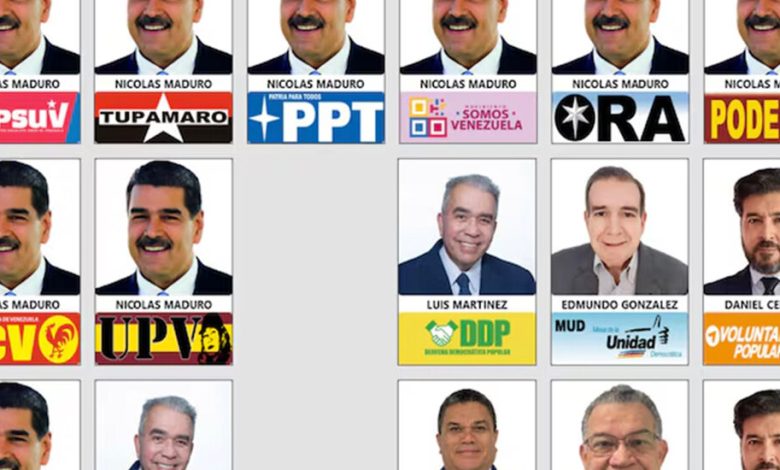Why Does Venezuela’s President Appear on the Ballot 13 Times?

“We haven’t seen anything similar to this,” said Staffan Darnolf of the International Foundation for Electoral Systems, a group outside Washington that advises more than 30 countries on electoral operations.
The ballot’s layout, he added, seems to provide Mr. Maduro a clear upper hand.
“It is an advantage to be on the top part of a ballot, because normally that’s what people are looking at,” he said.
Mr. Maduro’s government has thrown up numerous obstacles to a free and fair vote. It has disqualified candidates, arrested opposition activists and prevented millions of Venezuelans living abroad from registering to vote.
To many government critics, the ballot’s layout is another measure by the authoritarian government to skew the vote in its favor even as surveys suggest overwhelming support for the opposition.
“As the election has become less and less competitive, the voting instruments become more confusing,” said Eugenio Martínez, the director of Votoscopio, an electoral monitoring organization.
Venezuela’s electoral authority did not respond to a request for comment.
It is not unusual in some countries for multiple parties to nominate the same candidate, several election experts said.
That has long been the case in Venezuela, and the fact that a candidate appears more than once on the ballot is not by itself a sign of a flawed election, said Carlos Medina, a director of the Venezuelan Electoral Observatory, an independent group.
What is worrisome, he added, is that many of the parties on the ballot have been co-opted by the Maduro government to nominate either Mr. Maduro or candidates rubber-stamped by the government.
“In the case of Venezuela, it is a tradition that the voting options look that way,” he said. “The problem is in the origin of the political parties that are supporting Nicolás Maduro 13 times in this case.”
About six years ago the government started targeting some of the country’s oldest and most established political parties and replacing their leaders with government loyalists.
At the same time it approved the creation of a raft of new parties to preserve a facade of democracy by nominating candidates not seen as legitimate challengers by political experts and many Venezuelan voters.
Fourteen of the 38 parties on the ballot were created in the past six years.
Under Venezuelan law, the party that won the most votes in the previous election gets the first choice of placement on the election ballot, and any allied parties supporting the same candidate are placed together.
But the three parties backing Mr. González are not placed together because when the ballot’s configuration was determined those parties were not supporting the same candidate. So his three images do not appear consecutively.
“They’re trying to keep the facade of an election, but gradually limit the ability of people to vote for what they want,” said Tamara Taraciuk Broner, an expert on Venezuela for the Inter-American Dialogue, a research organization in Washington. “And the ballot is a clear example of that.”
